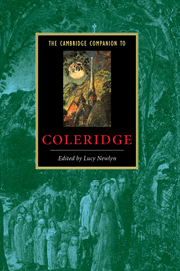Introduction
Published online by Cambridge University Press: 28 May 2006
Summary
Since the early 1980s, major developments have occurred in the way British Romanticism is approached and understood. We now read the literature of that period (1789-1832) with a greater consciousness of its political, economic and social contexts. The impact on British writers of the French Revolution and ensuing political movements has been more thoroughly investigated than ever before. New historicist criticism has taught us to understand how market-forces influenced the production and enjoyment of literature. Women's writing (as well as the work of various male authors previously judged to be 'minor') has come very rapidly to the fore, involving significant shifts in how we think about the canon.
As a consequence of all these changes, it would be unthinkable nowadays to design a course on British Romanticism based around the work of six male poets, Blake, Wordsworth, Coleridge, Byron, Keats and Shelley; or even around a list expanded to include the great prose-writers of the age: Scott, Hazlitt, Lamb, Peacock and De Quincey. ‘What about Wollstonecraft, Austen, Mary Shelley?’, our students might legitimately complain if such a course were offered. (And what about Barbauld, Edgeworth, Godwin, Burke, Paine and Thelwall, one might rejoin; for the list of writers available for study grows longer every year.) The ‘Big Six’ go on being of vital importance, of course. But we now want to understand and appreciate their achievements historically and comparatively, not just according to the standards of taste which have made them classics for two centuries. This evidently entails diversification, both in the range of writers we teach, and in the disciplines and methodologies we draw on in our teaching. But it also calls for a reconsideration of the central figures who at one time constituted the canon. For, if the meaning of the word ‘Romanticism’ has shifted to accommodate a broader spectrum of texts and approaches, then it follows that the contribution made by each individual Romantic writer asks also to be reappraised.
- Type
- Chapter
- Information
- The Cambridge Companion to Coleridge , pp. 1 - 14Publisher: Cambridge University PressPrint publication year: 2002
- 2
- Cited by



